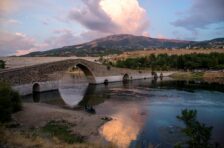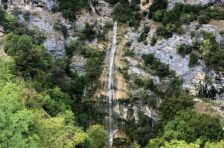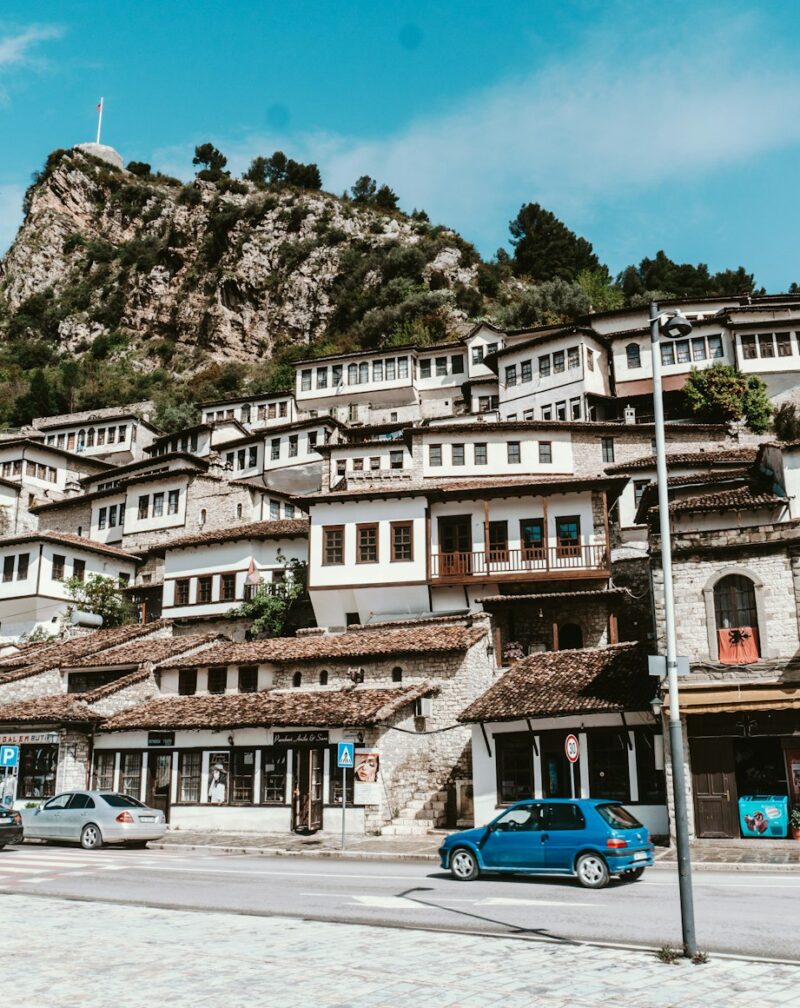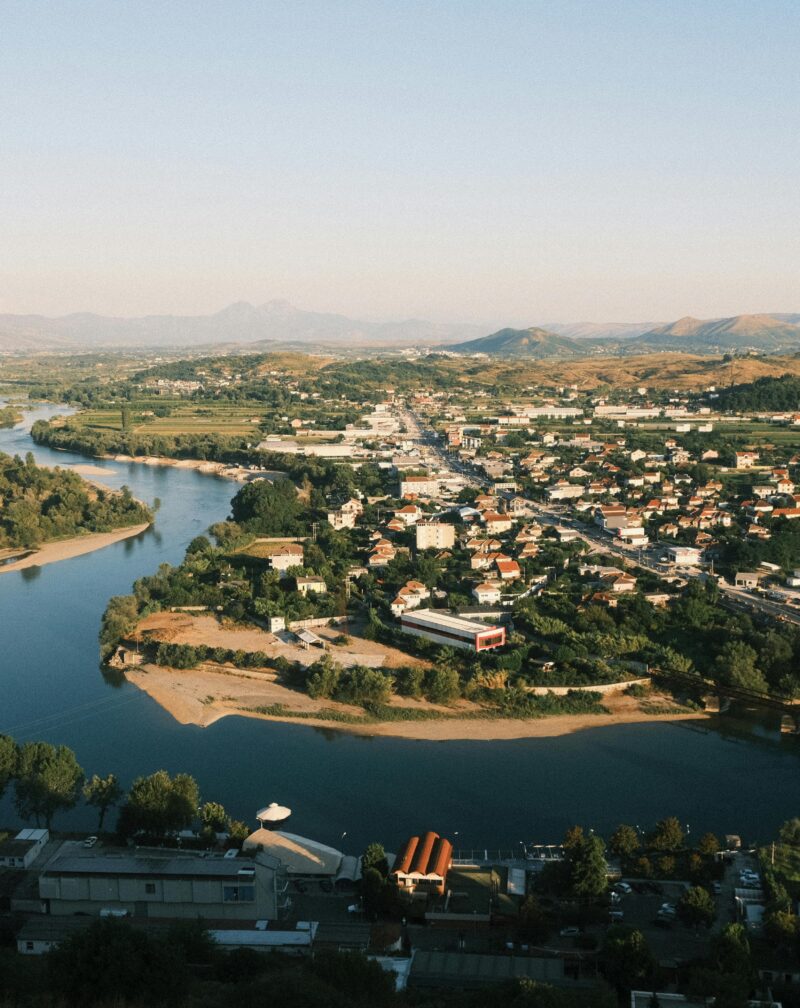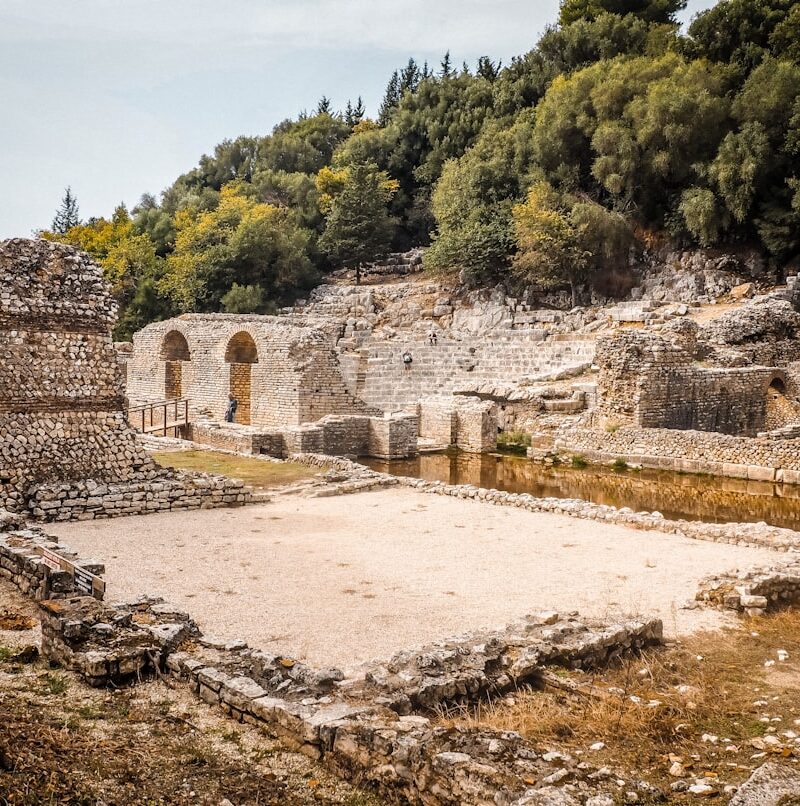How to Actually Reach Albania
Albania’s getting easier to reach, though it’s still not as straightforward as landing in Rome or Athens. Most visitors arrive by air through Tirana, but there are other options depending on where you’re starting from.
Flying to Tirana
Mother Teresa International Airport (TIA) sits about 17 kilometers northwest of Tirana. It’s not a huge airport, but it handles increasing international traffic every year.
Direct flights operate from numerous European cities. You’ll find regular connections from Vienna, Munich, Frankfurt, Rome, Milan, Istanbul, and Budapest. Low-cost carriers like Wizz Air and Austrian Airlines run frequent routes, which keeps prices competitive.
From North America, Australia, or Asia, you’ll connect through a European hub. Most commonly, people route through Vienna, Istanbul, or Rome. The connections work reasonably well, though you’ll want at least a 2-hour layover to account for any delays.
Flight prices fluctuate dramatically by season. Summer flights cost significantly more, especially to/from Western Europe. Booking 2-3 months in advance generally offers better rates. Last-minute flights in August can be surprisingly expensive.
The airport itself is small and efficient. You’ll clear immigration quickly unless several flights land simultaneously. Baggage claim works fine. Currency exchange is available; you can also withdraw cash from the ATM.
Getting from the Airport to Tirana
Several options exist, ranging from cheap to convenient.
The public bus (Rinas Express) runs between the airport and Skanderbeg Square roughly every hour. It costs 400 lek (about €3.50), takes 30-40 minutes depending on traffic, and works perfectly fine if you travel light. Buses are generally on time, though the schedule can be optimistic during peak hours.
Taxis wait outside arrivals. Official airport taxis charge around €20-25 to central Tirana. Make sure the taxi has a visible company logo and working meter, or agree on the price before getting in. Some drivers try charging tourists €40-50, which is excessive.
Rideshare apps like Bolt operate from the airport, usually costing €12-18 to the city center. This often works out cheaper than official taxis and you know the price upfront.
Pre-arranged transfers through hotels or tour companies cost €25-30 but eliminate any confusion or hassle. It is worth considering if you arrive late at night or if you prefer someone holding a sign with your name.
Driving from Neighboring Countries
Land borders with Montenegro, Kosovo, North Macedonia, and Greece all function well. If you’re already in the Balkans, driving can make sense.
From Montenegro, the main crossing at Hani i Hotit (near Shkodër) sees regular traffic. The road has improved significantly, though it’s still winding mountain driving. Budget 1.5 hours from Podgorica to Shkodër.
The Kosovo border at Morina (heading toward Kukës) or Qafe Prush works fine, though roads in this region can be rough. Many visitors doing a Balkans tour enter from Kosovo before heading south through Albania.
Greece has multiple border crossings. Kakavijë (heading toward Gjirokastër) is the busiest. Expect waits during summer weekends as Greek Albanians visit family. The crossing at Kapshticë (near Korçë) sees less traffic.
North Macedonia’s border at Qafë Thanë (Struga to Pogradec) offers beautiful lake views as you cross.
Border formalities are straightforward for most nationalities. Have your passport ready, expect a few questions about your plans, and you’re through. During peak summer periods, waits can extend to 30-60 minutes at major crossings.
Ferry from Italy
Multiple ferry companies operate between Italy and Albania. Routes connect Bari, Brindisi, and Ancona with Durrës. Some ferries also stop in Vlora.
Overnight ferries are common. You board in the evening, sleep in a cabin (or reclining seat if you’re economical), and arrive the next morning. Day ferries exist but are less frequent.
Prices vary significantly. A foot passenger in deck seating starts around €50-60, while a cabin for two with a car can reach €200-300. Book in advance during summer, especially if you bring a vehicle.
The crossing takes 8-9 hours from Bari, 7-8 from Brindisi. Seas can be rough, so bring motion sickness medication if you’re prone to seasickness. The Adriatic doesn’t mess around in bad weather.
Companies like Adria Ferries and European Ferries maintain regular schedules. Service quality varies, some ferries feel modern and well-maintained, others show their age. Read recent reviews before booking.
Bus from Balkans and Greece
International bus routes connect Albania with neighboring countries and beyond. Companies like FlixBus and local operators run services to Athens, Thessaloniki, Skopje, Pristina, and Podgorica.
These buses work fine and cost very little. Tirana to Athens might cost €25-35, taking 10-12 hours depending on borders and stops. Comfort varies by company and specific bus, but generally acceptable for budget travelers.
The main bus station in Tirana (northern section) handles international departures. It’s not fancy, basically a large parking area with ticket offices around the perimeter. Arrive early to find your bus among the dozens parked chaotically.
Train? Not Really
Albania’s rail network is limited and slow. There are a few domestic routes, but no international train connections currently operate. The country invested in roads rather than railways, for better or worse.
Neighboring countries have rail networks that get you close. You can take a train to Thessaloniki, then bus to Albania. Or train to Podgorica, then onward by bus or taxi. But there’s no avoiding the road portion.
Cruise Ships
Some Mediterranean cruises stop in Durrës or, less commonly, Saranda. These are brief port calls, typically 6-10 hours. Enough time for an organized excursion to nearby sites but not for any deep exploration.
If you’re arriving by cruise, book shore excursions through reputable local companies rather than ship tours if you want better value and smaller groups. Though ship excursions guarantee you won’t miss departure if something goes wrong.
Which Way Makes Sense?
For most international visitors, flying to Tirana is the obvious choice. It’s quick, prices are reasonable, and you start your trip in the capital with easy access to the whole country.
Ferries work if you’re already in Italy and have time for the overnight crossing. Driving makes sense if you’re doing a Balkans Road trip and want your own vehicle. Buses suit budget travelers or those connecting from nearby cities.
There’s no single best way. It depends where you’re coming from, your budget, how much time you have, and whether you want to experience Albania as part of a larger Balkans journey or as a standalone destination.




